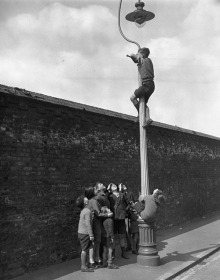The first television broadcast
Seventy-two years ago, video cameras broadcast a Test for the first time, from Lord's. The coverage has evolved since, but the good still outweighs the bad
Steven Lynch
24-Apr-2010
|
|

|
1938
A Lord's Test is always special. But 1938's was more unique than most: it was the first cricket match to be shown on television. At 11.29 on June 24, a little over six months after the birth of Kerry Packer, Ian Orr-Ewing handed over to Teddy Wakelam, sat by a couple of cameras on the top tier of the Nursery End, to begin commentary as Ernie McCormick bowled the opening over to Charlie Barnett.
Coverage of cricket has inevitably evolved - remember those old videos where every second over was viewed from behind the wicketkeeper? - and has been fundamental to Packer and to the development of one-day cricket in particular. Now we have double-ended coverage, Hawk-Eye, more than 30 cameras, stump-cams stump-mikes, Snickometers. Yet in some ways the advances have been a double-edged sword: television holds too much clout for the traditionalist's comfort, a recent example being the sacrifice of a decent contest to accommodate day-night matches during the World Cup. Good outweighs bad, though: anyone in any doubt should shove on a video of Botham's Ashes, of Sachin batting, of Warne and Murali at their most magnetic. Television has brought cricket's distinctive magic to parts that no other medium can reach.
Steven Lynch is the editor of the Cricinfo Guide to International Cricket. This article was first published in Wisden Asia Cricket magazine